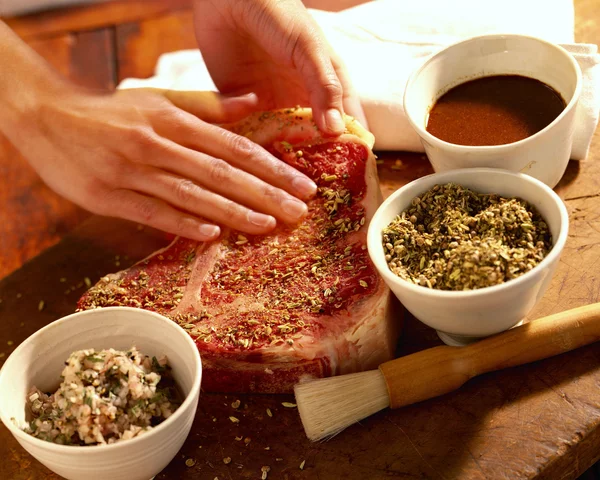Understanding the Difference Between Cured and Uncured Ham
Before we delve into the nitty-gritty of whether you can eat uncured ham without cooking it, it's important to understand the difference between cured and uncured ham. Cured ham refers to ham that has been preserved using a process that involves salting, smoking, and sometimes aging. The curing process not only enhances the flavor of the ham but also extends its shelf life.
On the other hand, uncured ham is essentially fresh pork that hasn't undergone any form of preservation. It still retains its natural flavor and texture. Because it hasn't been preserved, uncured ham has a shorter shelf life than cured ham and needs to be stored properly to prevent spoilage.
Is Uncured Ham Safe to Eat Without Cooking?
The short answer is no. Uncured ham is essentially raw pork, and consuming raw or undercooked pork can expose you to a variety of foodborne illnesses, including trichinosis, a parasitic infection caused by eating raw or undercooked pork infected with the larvae of a species of worm called Trichinella.
While these illnesses are relatively rare, they can be serious and potentially life-threatening, especially for individuals with weakened immune systems. Therefore, it’s always recommended to cook uncured ham thoroughly before eating it.
Proper Cooking of Uncured Ham
When cooking uncured ham, it's important to ensure that the internal temperature reaches at least 145°F (63°C), as recommended by the United States Department of Agriculture (USDA). This temperature is sufficient to kill any potential parasites or bacteria present in the pork.
An instant-read food thermometer is a handy tool to help ensure your ham reaches the required internal temperature. Always insert the thermometer into the thickest part of the ham, avoiding the bone, for the most accurate reading.
Handling and Storing Uncured Ham
Proper handling and storage of uncured ham are crucial to prevent spoilage and potential foodborne illnesses. Uncured ham should be stored in the refrigerator at 40°F (4°C) or below and used within 3-5 days.
If you're unable to use the ham within this timeframe, consider freezing it. Frozen ham can last up to six months without losing its quality. Just remember to thaw it properly in the refrigerator before cooking.
Can You Eat Other Uncured Meats Without Cooking?
Not all uncured meats are created equal. Some, like certain types of salami and prosciutto, are safe to eat without cooking because they've been preserved through methods such as air-drying and salting.
However, these methods do not apply to all uncured meats, and it's still crucial to cook most uncured meats, including pork, beef, and poultry, to a safe internal temperature before eating to minimize the risk of foodborne illnesses.
The Risks of Consuming Raw or Undercooked Meats
Eating raw or undercooked meat can expose you to a variety of foodborne pathogens, including E. coli, Salmonella, and Campylobacter. These can cause symptoms ranging from mild gastrointestinal discomfort to severe dehydration and bloody diarrhea.
In worst-case scenarios, these foodborne illnesses can lead to life-threatening complications, such as kidney failure, meningitis, and septicemia. Therefore, it's always recommended to cook meat thoroughly before eating.
The Benefits of Consuming Cooked Meats
Apart from reducing the risk of foodborne illnesses, cooking meat also has other benefits. For instance, cooking makes meat easier to chew and digest, allowing your body to absorb its nutrients more efficiently.
Additionally, cooking can enhance the flavor of the meat, making it more enjoyable to eat. It can also kill parasites and bacteria that may be present on the meat, ensuring its safety.
Conclusion: Always Cook Your Uncured Ham
In conclusion, while uncured ham might be tempting to eat as is due to its fresh and natural flavor, it's important to cook it thoroughly before eating to avoid potential health risks. By doing so, you're not only ensuring your safety but also improving the taste and digestibility of the meat.






Write a comment